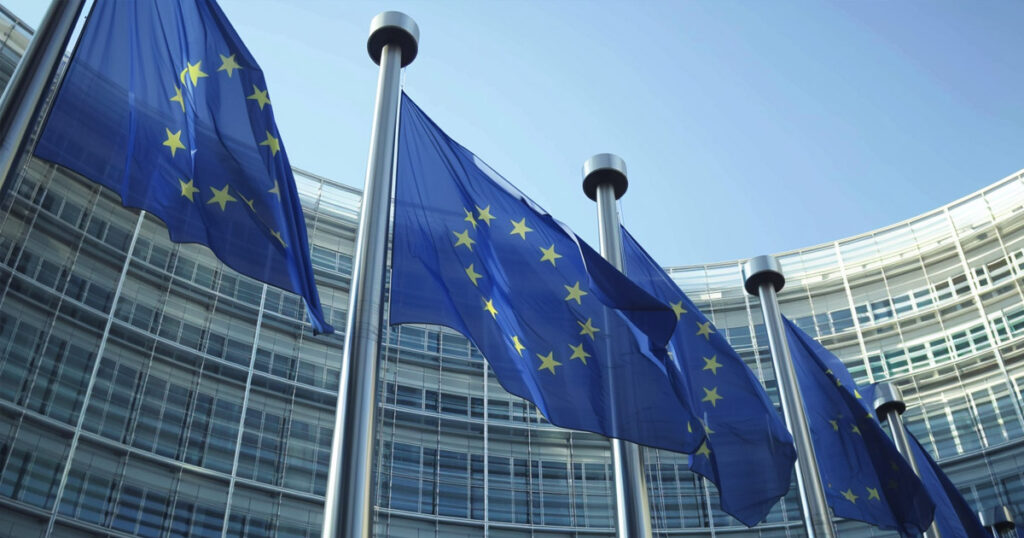MiCA delistings will catalyse stronger European crypto offerings


The following is a guest post by Anil Oncu, CEO of Bitpace.
Since its inception in 2020, the European Union’s Markets in Crypto-Assets (MiCA) regulation has shed a new light on the European crypto industry. While many have considered the continent a less important player, the fledgling regulation has introduced a new narrative—one where Europe paves a new path for crypto rather than trailing behind the US or Asia in blockchain innovation. MiCA, and the standards it sets, might be the push companies need to deliver better products for all.
Delivering these standards is not without its speedbumps. Earlier this month, Coinbase announced it would delist stablecoins from unauthorized providers by the end of 2024 to achieve MiCA compliance. The delisting would affect assets like USDT, the largest stablecoin by current market cap. Tether’s response? A statement promising to introduce a “technology-based solution” to overcome MiCA compliance challenges.
This seemingly vague response hints at something critical. Companies can deliver compliant solutions that are more secure, efficient, and stable. They just haven’t yet. With the implementation clock ticking, it is only the beginning of witnessing how MiCA will catalyze a better European crypto industry.
Is MiCA the New GDPR?
Emerging technologies and regulators have often had a contentious relationship. Keeping up with constant evolution is daunting, and it is impossible to introduce effective regulation without industry consultation.
MiCA closely parallels the introduction of the General Data Protection Regulation (GDPR) in 2016. In response to changing digital advertising and internet practices, the GDPR set a global benchmark for data privacy, forcing companies worldwide to comply with Europe’s rigorous standards or face stiff penalties. Despite early skepticism, GDPR has become the de facto standard for data security. MiCA has the potential to do the same for crypto-assets.
The new framework could be a complete game-changer for the industry in the EU, with compliant stablecoins being able to provide to the whole of the EU crypto market, transcending the current disconnect between separate individual licensing in different countries. A trend of compliance will likely emerge from other coins, leading to boosted cryptocurrency participation across many industries.
Making Sense of MiCA
Regulation and licensing are nothing new in the finance world. Strict regulation and consumer protections underpin today’s banking, payments, and asset servicing. Thanks to its borderless and decentralized nature, Crypto does not face the same regulatory scrutiny. But that does not mean legal considerations should fall by the wayside.
MiCA stands out as one of the most comprehensive digital asset regulations to date. It aims to solve some of the issues plaguing crypto’s public reputation: crime, bad actors, and misinformation, among others. Under MiCA, crypto providers must inform investors about risks like scams and volatility. It also encourages sustainability by mandating companies to disclose the environmental impact of their operations.
A more transparent and climate-conscious crypto sector does not come with many downsides. The same holds true for MiCA’s stablecoin regulations, but what has taken providers so long to make these changes?
More Stable Stablecoins
MiCA asserts that stablecoin issuers must be fully transparent about their reserves to protect consumers and investors. This is a significant step forward for the stablecoin market, where questions about transparency and solvency often overshadow potential benefits. Regulating stablecoin providers will force an answer to these probing questions.
Tether’s upcoming solution is a prime example of MiCA-driven evolution. By focusing on a “technology-driven approach,” Tether is likely aiming to deliver a safer, more sustainable, and more secure product than what exists today in the European market. This was not driven by a sudden altruistic desire for improvement but by the necessity to comply with MiCA’s stringent requirements. Stablecoin providers have always had the potential to innovate. However, until MiCA, there wasn’t sufficient regulatory pressure to push them in that direction.
Circle, the second-largest stablecoin by market cap, has already heeded the call and obtained a French e-money license in July 2024. The company has a strong history of compliance. Its USDC reserves are backed by cash or bonds, and many see its KYC and AML standards as the gold standard. With MiCA, it’s not just market competition that will drive similar efforts from Tether. Regulation is forcing a “do-or-die” moment that will benefit the entire industry.
This idea of a more stable industry through stringent regulation means we could see more traditional businesses and industries participate in crypto-services in the not-too-distant future. It has the potential to increase competitiveness by attracting investment, talent and companies to the crypto industry, and become a huge opportunity for economic and technological advancements for the EU.
MiCA Goes Global
MiCA sets the stage for more effective regulation worldwide. Other regions may look to MiCA as a model for their own regulatory frameworks, much as they did with the GDPR. The impact of this EU regulation is not only in its depth but also in its clarity. It starkly contrasts the fragmented regulatory attempts of the U.S. and sets a precedent for crypto companies to operate confidently. Should MiCA be a success, it will pave the way for global regulatory frameworks and can be replicated abroad in other jurisdictions.
MiCA is setting the standard for crypto-asset regulation and from here on out, the industry can evolve and grow in a way that was not possible before. As MiCA approaches its full effect date in 2026, we can expect to see safer, more reliable products emerge, paving the way for a more secure and sustainable crypto ecosystem in Europe and beyond.
Mentioned in this article
#MiCA #delistings #catalyse #stronger #European #crypto #offerings
News plays a pivotal role in our lives by keeping us informed and connected to the world. It serves as a critical source of information, offering updates on current events, politics, economics, science, and more. Through news, we gain awareness of global issues and local developments, helping us make informed decisions in our personal and professional lives. News also fosters discussion and debate, encouraging critical thinking and perspective-taking. Moreover, it promotes transparency and accountability among governments, businesses, and other institutions. In a rapidly changing world, staying updated with the news enables us to adapt to new challenges and opportunities, shaping our understanding of the complexities of society. Ultimately, news is not just about information; it empowers us to participate actively in the world around us, contributing to a more informed, engaged, and responsible global citizenry.
Health is fundamental to our well-being and quality of life, making it an essential aspect of daily existence. It encompasses physical, mental, and emotional aspects, influencing our ability to function effectively and enjoy life fully. Prioritizing health allows individuals to maintain optimal physical fitness, reducing the risk of diseases and promoting longevity. Mental health, equally crucial, affects our cognitive abilities, emotional stability, and overall happiness. Investing in preventive healthcare through exercise, balanced nutrition, and regular medical check-ups helps in early detection of potential health issues, ensuring timely intervention and treatment. Beyond individual benefits, a population’s health impacts societal productivity and economic stability. Governments and organizations worldwide emphasize public health initiatives to address pandemics, health disparities, and promote overall well-being. Ultimately, health serves as the foundation upon which we build our lives, influencing our ability to pursue goals, nurture relationships, and contribute meaningfully to society.
Money plays a crucial role in our lives as a means of financial security and freedom. It enables us to meet basic needs such as food, shelter, and healthcare, while also providing opportunities for education, travel, and personal growth. Beyond material comforts, money facilitates social connections and experiences that enrich our lives. It empowers individuals to invest in their futures, whether through savings, investments, or entrepreneurial ventures, thereby fostering economic stability and growth. However, the pursuit of wealth should also be balanced with ethical considerations, as money can influence relationships and societal dynamics. Responsible management of finances is key to achieving long-term goals and mitigating financial stress. Ultimately, while money is a tool for achieving aspirations and fulfilling desires, its true value lies in how it is utilized to improve both personal well-being and the broader community.
Earning Easy Money in 2024: Opportunities and Considerations 💸
In 2024, the landscape of earning easy money presents diverse opportunities, albeit with considerations. The digital age offers platforms for freelancing, online trading, and e-commerce, allowing individuals to leverage skills and creativity for financial gain. Cryptocurrency investments continue to allure with potential for quick profits, yet they entail high volatility and risk. Moreover, the rise of the gig economy enables flexible work arrangements through apps and websites, offering quick payouts but often without job security or benefits. Passive income streams such as rental properties and investments in stocks or bonds remain viable, but demand initial capital and ongoing management. Amid these options, caution is essential to avoid scams and unsustainable ventures promising overnight success. Ultimately, while the allure of easy money persists, informed decisions, diligence, and a long-term perspective are crucial for sustainable financial growth and security in the dynamic year ahead.







